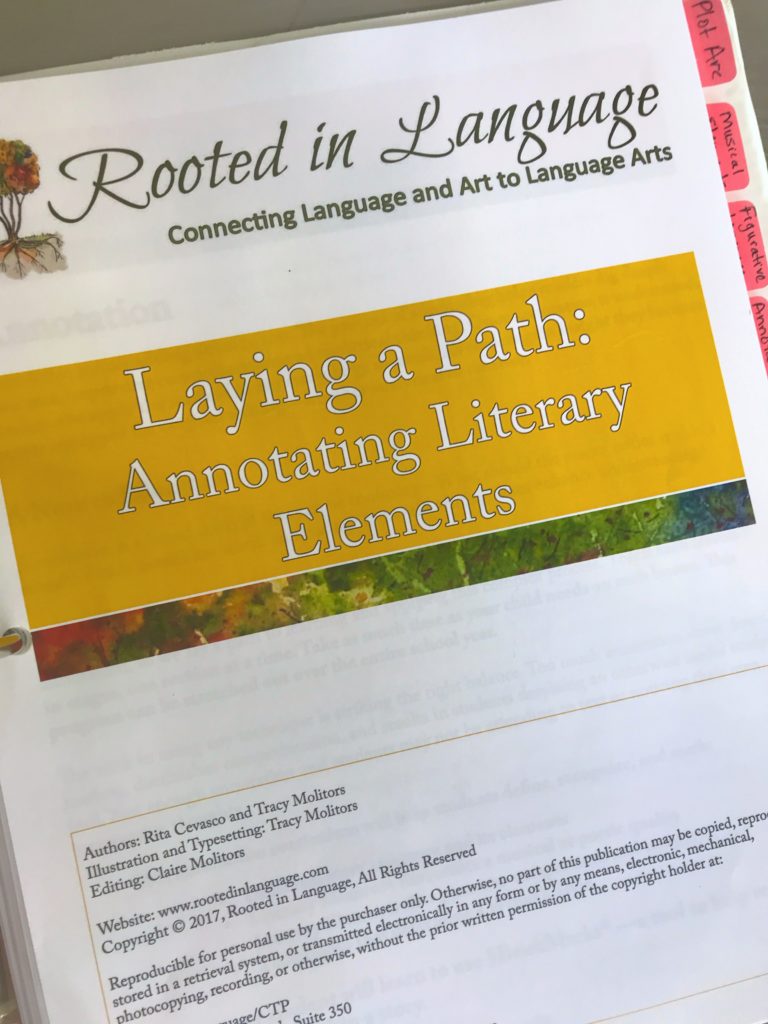When it comes to analyzing literature, I’ve not always been a fan. I know! I talk a lot about homeschooling language arts, and here I’m saying I don’t like literary analysis. I should just shut down this blog.
Don’t get me wrong, I enjoy reading fiction, but it’s not something I want to spend a lot of energy examining. Give me a nonfiction book I’m interested in and I will dig into that mother like a niffler after gold. But when it comes to academically picking apart stories? Meh, who cares?
Then we hit the high school years and I thought, um, maybe colleges care? So the summer before my son’s freshman year I read – or tried to read – How To Read Literature Like a Professor.
Houston, We Have a Problem
Seriously, that book was everything I hated about literature in school. It called up a high school literature dementor, sucking all of the life and joy out of reading.
Look, I don’t want to be as specialized as an English professor and neither do my kids. I’m on board for learning new ways to enjoy fiction, but I’m not buying this idea that you should read like a college professor. You can read books like an intelligent, thoughtful person without needing to be as specialized as an English professor.
What Was Missing from Our Homeschool Plan
I had this big question: How do I expand our fiction skills without sucking the life out of literature?
I landed on Brave Writer Boomerangs and that was a step in the right direction for us. But when it came to the expected big, juicy conversations with the discussion questions, I got a lot of shoulder-shrugging and “I dunno” responses from my boys.
Given my own low interest in digging into fiction, I wasn’t in a position to naturally facilitate better conversations on my own. I still felt a key piece was missing to help me understand how take our lit studies to a solid high school level. Someone out there knew the “secrets” I didn’t.
Fix My Teaching Problem, Please
Rita and her crew know those secrets, and they like to share them. I purchased Rooted in Language’s Annotating Literary Elements guide when it was first released in 2017, and it completely changed the way we interact with books. It was the key piece I was missing.

The plot arc section in ALE has by itself transformed the way we work with our novels. Sure, there are a bajillion free graphic organizers for the plot arc, but none of those explain three key components the way ALE does: the spark event, crisis point and climax. ALE’s explanation of how those three parts point towards theme has been my favorite part in this guide. We no longer need an outside book guide to tell us the theme; we can figure it out for ourselves.
Better still, ALE gives you detailed instructions for each lesson. The plot arc starts off using a picture book and walks you through the process step-by-step. Yep, picture books for teenagers. It works. Pinkie promise.
(I notice I make a lot pinkie promises around here. Should I switch to blood oaths to mix things up? The Unbreakable Vow?)
ALE offers suggested picture book and short story titles. We also used A Bad Case of the Stripes, which is PERFECT for teens because it deals with the theme of…WAIT. I won’t tell you. If you use ALE’s plot arc, I know you can discover it yourself! You don’t need me. And besides, you may come up with a different theme than me and that’s totally fine because…
There is absolutely everything in great fiction but a clear answer.
Eudora Welty
One of my all-time favorite quotes when it comes to homeschooling! I’ve quoted it so often my teens know it by heart.
Me: What do you find in great fiction?
Boys, in unison: Everything but a clear answer!
It gives them the courage to speak up on their ideas about literature because you can’t get it wrong. There’s no clear answer!
Why It Worked For Us
I’ve shared details on how we use and interact with the plot arc lesson, and here’s an IG picture of my plot arc board. ALE also digs in with lessons on figurative language, writer’s craft, musical elements (think poetry) and how to use their annotating bookmark. Rooted in Language also recommends using the plot arc at the high school level with each novel you study.
Thanks to the Annotating Literary Elements guide, my days of being plagued with shoulder shrugging and “I dunno” responses are gone. My teens now have intellectual thoughts and insights about the books they read. I finally feel like we’re having that high school level discussion. And my own dislike for digging deeper into fiction is gone too. I discovered that “secret” that seemed just out of reach.
Heather
Free related resource offered by Rooted in Language
Analysis instructional plan
Their podcast on using the ALE guide
Make the Invisible, Visible




what do you think?